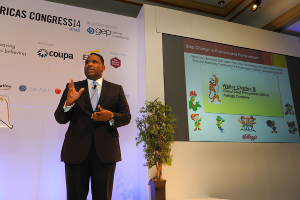Don’t focus on 80% of spend and leave 20% on the cutting-room floor
 The biggest impression left by Walter Charles III’s keynote presentation at the Procurement Leaders Americas Congress in Miami, Florida, was one of the necessary boldness and pace of change.
The biggest impression left by Walter Charles III’s keynote presentation at the Procurement Leaders Americas Congress in Miami, Florida, was one of the necessary boldness and pace of change.
When looking at change management, sometimes the temptation is to apply familiar templates to a problem and look for early savings to justify the investment. So far, so good, but Charles placed the emphasis on a far more proactive and aggressive form of change management.
When Charles took his post, he found that he had inherited a function that was performing well, which meant the next level of value required a step change in process, structure and talent.
The Pareto principle
By throwing out conventional wisdom, Charles’ team demonstrated the willingness to grow at an impressive pace. The Pareto principle was an early target – the suggestion that procurement should focus on the 80% of spend and leave 20% on the cutting-room floor, as Charles called it, was unacceptable, especially if that 20% meant several billion costs being overlooked.
Jackie Sturm, the woman responsible for managing Intel’s global sourcing and procurement activities, made a similar point in her earlier presentation regarding the opportunity that lay in addressing healthcare spend, an area frequently overlooked and dismissed as difficult. The value is there to be had for the right team.
Equally, behavioral change is and was, Charles said, something that the right team with the right structures could do something about. More than that, he explained that if a procurement function could take a structured approach to dealing with stakeholders, reinforced by category expertise and data, there was a huge opportunity to become a game-changer.
The idea that you have to play by the business rules isn’t entirely helpful if that’s used as an excuse not to look for big targets and to let unchecked processes continue to occur.
Charles threw down the gauntlet by arguing that organisations needed to decide if they had the guts for change. Judging by Charles presentation, procurement functions need to decide if they have the ambition to start laying the tracks as they go in order to fulfill that pace of change.
Source: Procurementleaders.com